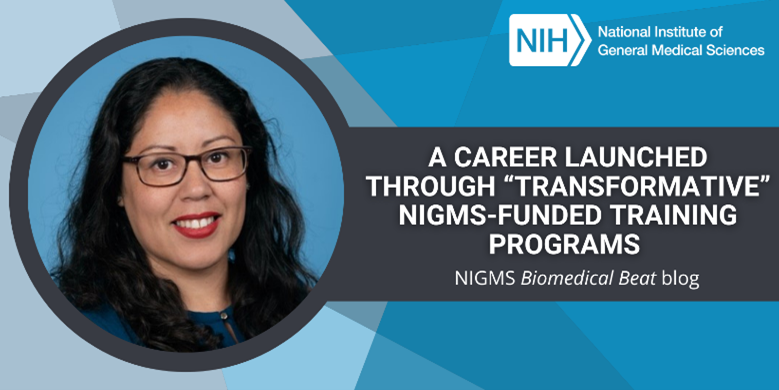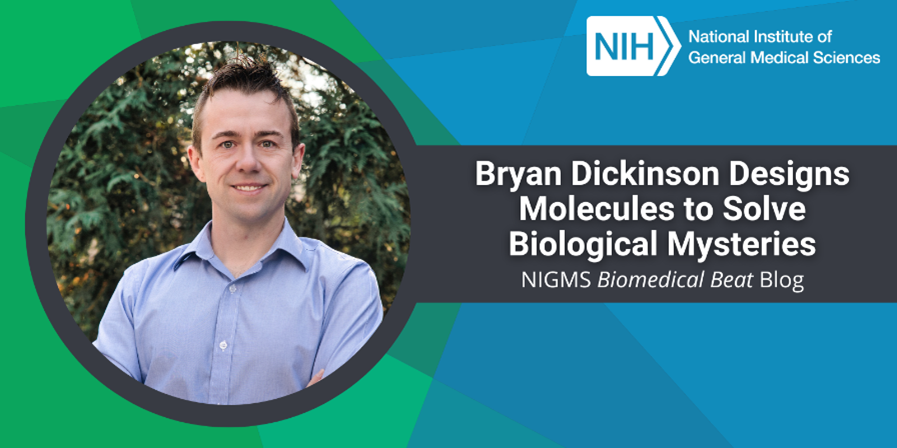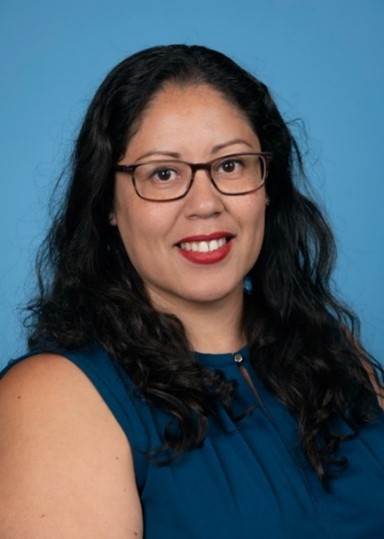
Brenda Andrade, Ph.D., assistant professor at California State University, Los Angeles (CSULA), wasn’t sure what she wanted to do when she first started community college. Through a program at her high school, she’d participated in Saturday morning science labs on the CSULA campus, and that introduction to science led her to think about pursuing some sort of scientific degree. She recalls flipping through the course catalog to the list of science classes needed to transfer to a 4-year university, and “naively going down the list and taking them.”
When a professor asked her if she’d thought about doing research, she responded, “What’s research?” That professor introduced her to the transfer program between the community college and nearby CSULA, and he encouraged her to apply to the NIGMS-funded Bridges to the Baccalaureate Research Training Program. When she did, she was accepted and began a summer research internship working in the lab of Linda Tunstad, Ph.D., a successful chemist with a similar background to Dr. Andrade’s. “That experience set my career trajectory,” she says. “I saw people like me, other Latinx people and people from underrepresented groups, doing research and thriving, like Dr. Tunstad. It really motivated me.”
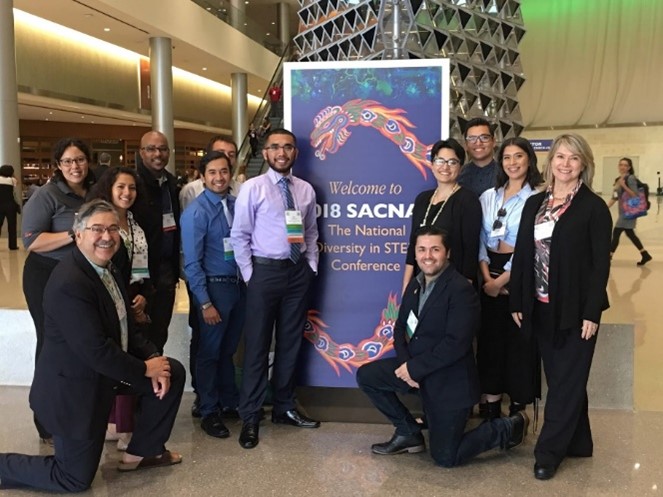
Dr. Andrade eventually transferred to CSULA and completed her undergraduate degree there as part of the Maximizing Access to Research Careers (MARC) program. Instead of applying directly to graduate programs, though, she took the advice of mentors to earn her master’s degree first. “I took a very long path to get where I am because I didn’t know what I wanted to do from the beginning,” she says. “My undergraduate profile wasn’t competitive enough to go directly into a Ph.D. program, so my mentors recommended that I get more experience under my belt through a master’s program before applying to graduate schools.” She stayed at CSULA to complete her master’s degree, with support from the Research Training Initiative for Student Enhancement (RISE) program. “That was transformational for me because for the first time, I didn’t have the burden of needing an outside source of income. I was a full-time student and researcher—and I exceled,” she says. “That’s when I could really see what was possible.”
She applied to graduate schools and accepted an offer from the University of Illinois, Urbana-Champaign. She praises the earlier guidance she’d received as the right decision, saying, “I was very well-prepared for the rigors of a Ph.D. program because of my master’s training.” Through her training, she received support from the Chemistry-Biology Interface Predoctoral Training Program. She earned her Ph.D. working in the lab of Steve Zimmerman, Ph.D., where she researched industrial and biomedical applications of polymers.
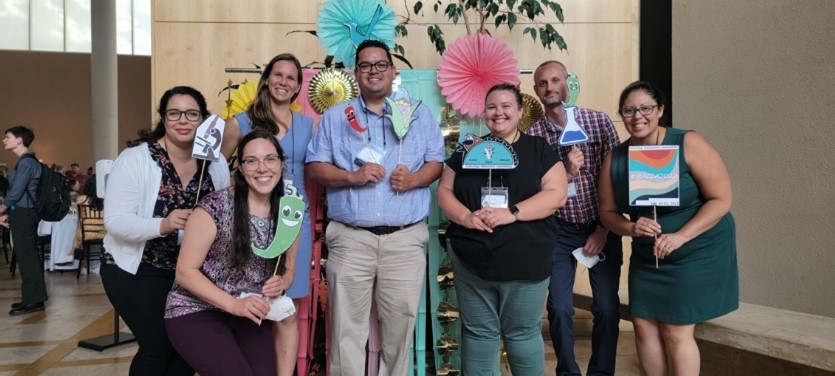
Returning to the West Coast, Dr. Andrade did her postdoctoral work in the lab of Michael Gilson, Ph.D., at the University of California, San Diego. Although his lab does mostly theoretical chemistry, she did experimental research looking at how drugs bind to polysaccharides called cyclodextrins. She found community with other postdoctoral researchers (postdocs) when she joined the San Diego Institutional Research and Academic Career Development Award (IRACDA) program. IRACDA is NIGMS-funded and designed for postdocs intending to pursue a career as a faculty member doing cutting-edge research and innovative teaching. Dr. Andrade and the other postdocs in the program found that they’d encountered similar experiences and challenges as underrepresented minorities, such as lack of generational wealth for support, responsibilities to provide for family members, and uncertainty in their job prospects.
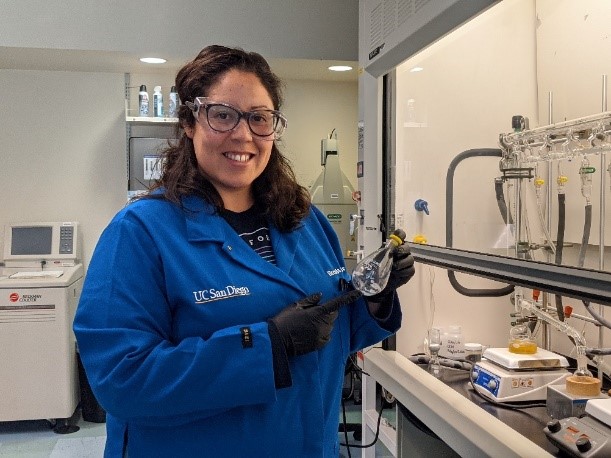
Dr. Andrade is now fulfilling her dream of returning to her alma mater, CSULA, as a faculty member, where she recently began her independent career as an assistant professor in chemistry. She teaches organic chemistry and is starting her own research lab focusing on using cyclodextrins to capture drugs in the body. She hopes her presence will inspire students with backgrounds similar to hers to pursue careers in science: “I hope that seeing me, someone who looks like them, will let them know that this career is possible.” She also plans to use her experience and her position to guide students and help them identify their dreams and how to achieve them without following the self-described “winding road of discovery” that she took.
Additionally, she wants to make her students aware of Latinx scientists. “Textbooks do a great job of highlighting significant chemists, but there are also Latinx chemists who aren’t included,” she says. “Many current Latinx chemists like myself are working in the field, and I’d like to be a voice for them to my students.”
The CSULA Bridges to the Baccalaureate Research Training Program, MARC, and RISE programs are supported by NIGMS grants R25GM049001, T34GM008228, and R25GM061331, respectively. The University of Illinois, Urbana-Champaign, Chemistry-Biology Interface Predoctoral Training Program is supported by NIGMS grant T32GM070421. The San Diego IRACDA program is supported by NIGMS grant K12GM068524.


